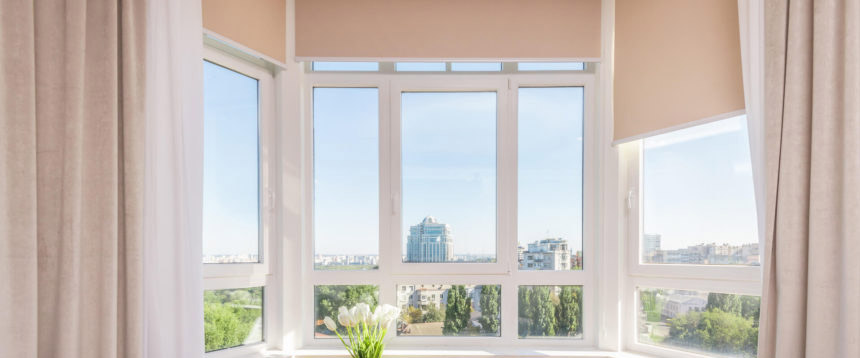Window Curtains vs. Blinds: Which is better?
The selection of window treatments requires careful consideration because they not only regulate light and guarantee privacy but also improve the room’s overall decor. The most common window treatments are made-to-measure rollers, Venetian, and Roman blinds that hang vertically from a rod, and fabric curtains that are draped vertically from a rod. To determine your preferences, you should take into account the following factors while buying window furniture for your home.
Room Dimensions
Full-length curtains work well in large spaces whereas blinds are preferable in small spaces and other wet places like the kitchen and bathroom. Be aware that window shades are recommended if there is any furniture, such as a bed or a sofa, below the window.
Design idiom
The best thing about curtains is that they may complement many different design motifs, although blinds are strongly advised for a contemporary and minimalist interior. Roman blinds are available in materials that can be coordinated with the room’s other furniture, but Venetian or roller blinds are more suited for a study or home office. The main benefit of window coverings is that they give a room a tidy appearance. They can be made of various materials, including fabric, jute, metal, or wood.
Light Management
For the best light control, install a layer of sheer curtains to let light in during the day and a second layer of heavy drapes that can be drawn at night to keep light out and promote restful sleep. The benefit of Roman and roller blinds is that when they are raised, they expose the entire window and let in the lightest; however, the drawback is that when they are lowered, light comes in from the sides. So that they can effectively block light, make sure to choose blinds that are wider and longer than the window. The slatted design of the horizontal and vertical Venetian blinds allows some light to enter even when they are completely closed. Venetian blinds have a lift cord mechanism or tilt mechanism that controls the entry of light.
Sound Management
In comparison to blinds, heavy curtains made of dense materials offer excellent sound insulation, especially if the house is adjacent to a busy road.
Simple Maintenance
Because they can either be dry cleaned or simply cleaned in a washing machine, curtains require little maintenance. However, Venetian blinds require routine maintenance because the slats of the blinds tend to collect a lot of dust and need to be cleaned frequently. Roman blinds must be disassembled, washed separately, and then reassembled. Additionally, the blinds’ strings or cords could become twisted from rigorous use, thus only specialists should repair or install the blinds.
Excellent Window Treatment Concepts for Your Living Room
For the impressive role they play in home décor, curtains are one of those items that hardly ever get the credit they merit. It’s amazing how much of a difference a single piece of cloth, like a curtain, can make in a space. The possibilities for curtains are endless; they either set the mood for the space or enhance other decorative items. They just make everything look good.
Choosing a curtain for your living room that has the appropriate color, prints, texture, and quality can be difficult due to the sheer number of possibilities available. It’s critical to do it properly the first time when doing something so important for the decorating of your home because a single error may completely ruin the look. We’ll talk about curtains in this brief guide, including how to choose the ideal setting for your living room.
How to Make a Living Room Curtain Selection
Always keep in mind that functionality should come first when choosing your living room curtain. Every curtain’s main function is to provide seclusion and regulate the quantity of light entering the space unless they are just for decoration. So, when selecting a drape for your home, keep the following in mind:
The Secret to Privacy is Fabric
Privacy is a key factor to take into account when selecting a curtain fabric. I’m pretty sure you don’t want your neighbors peering through your window. Do you prefer curtains that block out all light or those that allow some light through? Once you realize this, selecting the ideal curtain will be easier for you.
Curtain materials come in a range of opacities, from sheer, which blocks out direct sunlight while still letting in a lot of natural light, to opaque, which offers more privacy but lets in less light.
Equally Important are Patterns and Color
Your living room design might be ruined or improved depending on the color of your drapes. The curtains’ colors should ideally either complement the walls and furniture’s hues or stand out to draw attention. The amount of natural light that enters your living room can also be affected by the color of your curtains. Lighter curtains would allow more light to pass through, whilst those with darker hues would block light.
Length & Width
The size, length, and width of the curtain must be the same for every window, regardless of the window’s length and width, to maintain a consistent appearance. The window’s length should be calculated from its top to its bottom. To guarantee that the curtains sit outside the window frame when opened or cover it when closed, measure the width and add about six inches to each side.
Maintenance Ease
Like any other home accessory, curtains require periodic cleaning and upkeep to preserve their longevity. Although some materials are simpler to keep than others, curtains should ideally be washed every three to six months. Not only that, but some materials are better than others at keeping their form, color, and texture after washing.

